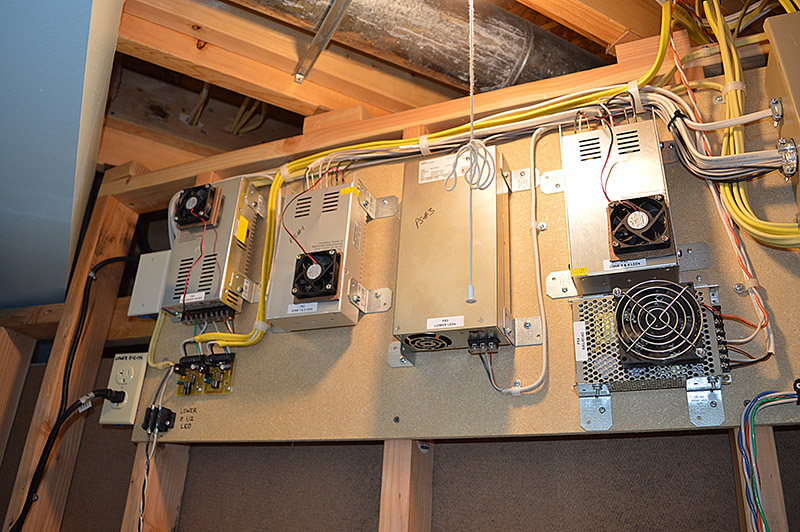I couldn't imagine shorting 100 amps.
Yeah, they call that a welder! It would take an enormous layout to make use of a 100A power supply.
Any one loco is going to draw between 300mA (modern 5 pole) and 2A (old BB) at full load. Much less under normal operating conditions. Multiply by number of locos running at any given time. Then there are other potential loads such as car lighting. Add it all up and you have the required amperage.
To minimize the amount of current (short circuit melting ability) available while still providing enough current for the entire layout, power districts are used. Exactly the same way your house is wired except there they are called branch circuits. Your house may have 200A service but at any given plug only 15-20A is available due to a circuit breaker. Model railroad layouts are the same except the voltage and amperage is much lower. A typical power district circuit breaker is 4-5A. So regardless of the maximum output of the power supply, 4-5A is all that is available within that particular power district. This prevents massive high current short circuits. A 100A power supply would be able to power 20 fully loaded power districts which would be a huge number of trains.
Where big amperage power supplies do come into play are with LED lighting strips. I can run tons of trains on my layout with its little 7A power supply. But to light up that same layout with LED strips requires over 50A @12VDC. Since it is a really bad idea to operate power supplies at full rated output for extended periods, I use 3 units totaling 110A. This keeps the system running at roughly 50% so my power supplies will last a long time.
The unit on the far left is 30A for my accessory and control buses.
Second from the left is 30A for 1/2 of the upper deck LED strips.
Next over is 50A for powering all the lower deck LED strips.
On the right is another 30A for the other 1/2 of the upper deck LED strips.
The little one in the bottom right is 7A for running trains.
